Mexico Rare Endemics Birding Tour
 20th July-4th August 2025: Mexico rare endemics birding highlights include Eared Quetzal, Thick-billed Parrot, Maroon-fronted Parrot, Worthen’s Sparrow, Tawny-collared Nightjar, Aztec Thrush, Tamaulipas Pygmy-Owl, Blue-capped Motmot, Bronze-winged Woodpecker, Crimson-collared Grosbeak, Altamira Yellowthroat, Thicket Tinamou, Grey-crowned Woodpecker, Elegant Trogon – £3950 Per Person
20th July-4th August 2025: Mexico rare endemics birding highlights include Eared Quetzal, Thick-billed Parrot, Maroon-fronted Parrot, Worthen’s Sparrow, Tawny-collared Nightjar, Aztec Thrush, Tamaulipas Pygmy-Owl, Blue-capped Motmot, Bronze-winged Woodpecker, Crimson-collared Grosbeak, Altamira Yellowthroat, Thicket Tinamou, Grey-crowned Woodpecker, Elegant Trogon – £3950 Per Person

Trip Details
- Dates: 20th July-4th August 2025
- Cost: £3950
- Single Supplement: £550
- Deposit: £500
- Tour length: 16 Days (14 days birding)
- Min/Max group size: 5 / 7
- Start/Finish: Monterrey/Hermosillo
- Tour Type: Birding
- Photo Opps: Good
- Physical Classification: Easy
- Leaders: Nick Upton & Michael Carmody
If you have any questions about this trip please feel free to ask by contacting us at info@calidrisbirdingtours.com
Mexico Birding
Set among pine and oak woodlands, rocky mountains with deep canyons, tropical forest, coastal wetlands, grassland plateaus, ranchlands and scrublands this is a part of Mexico full of variety that is seldom-visited by birders. Imagine nesting colonies of parrots, irridescent hummingbirds buzzing around flowering bushes, roving flocks of forest birds, scarce songbird breeding activity as well as a good helping of wetland species and you have a picture of birding in this part of Mexico before even thinking about the range of endemic birds to the region. This Mexican rare endemics birding tour is well-designed to satisfy both birders who are seeking key species as well as those with less experience in the region.
This part of northern and north western Mexico is one that contains a high level of biodiversity and habitat variety and is well served by road and air connections, making for ease of travel and pleasant accommodation. This is an area of Mexico usually overlooked by borders in favour of area further south but due to the high number of endemic species, including a high number that are hard to find elsewhere and at other times of the year, makes this a must-visit area for many birders. With plenty of time in each habitat we expect to gain good views of most species as well as plenty of opportunities to locate hard-to-find birds.
If you want to catch up with some of the least frequently seen birds of the region then this is an excellent trip to join, particularly as it is scheduled for a time of the year when these birds will be breeding and more conspicuous than at other times. This is a trip for those who get a thrill out of seeing species that many of the world’s top birders have not yet seen, to connect with birds that include Thick-billed Parrot, Eared Quetzal, Maroon-fronted Parrot, Tawny-collared Nightjar and Crimson-collared Grosbeak. With birds as diverse as Blue-footed Booby, Sinaloa Wren, Black Phoebe, Tamaulipas Pygmy Owl and Military Macaw this tour has variety as well as rarity.
Day 1, Arrival in Monterrey – 20th July 2025
Today everyone will arrive in Monterrey, Mexico. From the airport you will be taken to a comfortable airport hotel. In the early evening we will have dinner together and have a pre trip briefing.
Day 2, Sierra Madre Oriental – Linares – 21st July 2025
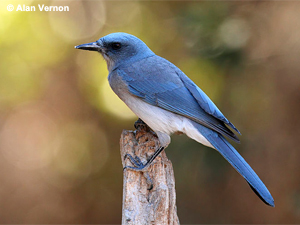
We will be packed and ready to go in the early morning to drive into some impressive scenery for our first taste of birding in Mexico. We leave the city and head into the northern part of the Sierra Madre Oriental mountain range. The high altitude mixed oak woodland is broken up by impressive shaded canyons and in this area we will be searching for the beautiful Mountain Trogon. This is also a really good area for a variety of other exciting birds including the range-restricted Mexican Jay, often to be seen in small groups, feeding on acorns, the striking Flame-coloured Tanager, Orange-billed Nightingale-Thrush and the lovely Crescent-chested Warbler with its insect-like sounding song. We should also look out for smart Grey Silky-flycatcher either feeding on fruit or calling in flight overhead and while Bridled Titmouse might be part of a group of birds that both European and North American birders are familiar with, it does not stop it from being an easy bird to love. Colima Warbler is not the most stunning bird but due to its highly restricted range we will make the effort to locate this species which we should find singing from atop bushes and small trees.
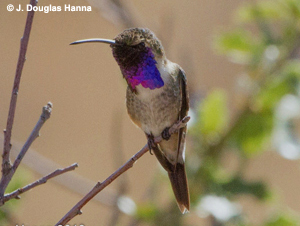
One of the main reasons for being in this area is to visit the sheer cliff face of “High Rise”, a long and visually impressive set of cliffs upon which the endemic Maroon-fronted Parrot nests upon in small colonies. This species of parrot is handsome due to its deep maroon colouration on its forehead and has an extremely limited global range, restricted to this part of Mexico. Our route today takes us into a variety of habitats where we can find a diverse set of species. Hopefully we can find the incredibly marked Montezuma Quail, the iconic Greater Roadrunner, the mysteriously-named Lucifer Hummingbird/Sheartail, the very elegant White-tailed Hawk and Scissor-tailed Flycatcher which although widespread is no less spectacular for that.
Having enjoyed some good birds we will start descending from the mountains by early afternoon so that we can get to our hotel in the town of Linares fairly early. This is so that we can check in and have an early dinner to give ourselves time in the evening to visit a reliable site, at Ojo de Agua, to look for one of the rare Mexican endemics that are the key focus of this birding tour; Tawny-collared Nightjar. Like many other nightjars, this cryptic species becomes active at the point of darkness and we will listen out for its distinctive call which is, perhaps, the best way of telling it apart from other similar species. As Tawny-collared Nightjar frequently hunts from perches on forest edge, or even fence posts in fairly open areas, we have a very good chance of enjoying this bird on our first day but if our search should be unsuccessful we have planned other chances later in the tour.
Day 3, Linares to La Pesca – 22nd July 2025
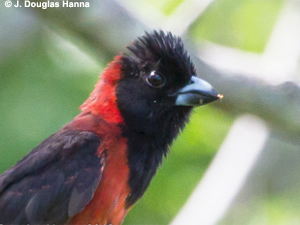
We will start the day with breakfast and early birding close to Linares, visiting a variety of lowland forest edge and other semi-wooded and farmland habitats for our first chances at several regional highlights. The incredibly-cloured Blue Bunting and Crimson-collared Grosbeak will be memorable for their plumage as well as their restricted range. We hope that the nature of this habitat allows us to get good views of Collared Forest-Falcon which is more frequently heard calling from the tops of tall trees than seen, but here we expect to connect with this handsome bird. The plain plumage of Botteri’s Sparrow might not make us quite as excited as some of the birds we hope to see here but as a bird restricted to Central America it is interesting as it sings from atop bushes and low trees in areas with scattered vegetation. More widespread species should include the handsome Northern Bobwhite and the region’s large corvid; Chihuahuan Raven. Having enjoyed the best of the morning birding hours, by mid-morning we will begin one of our longer drives, of up to around four hours, to arrive at La Pesca, Tamaulipas.

However, along the way there are plenty of birds to stop for as we travel through the Tamaulipan scrub and we will ensure that we have time to enjoy some of the commoner species of this habitat. For those who enjoy woodpeckers there are a couple of smart ones to look for in the form of Golden-fronted Woodpecker and Ladder-backed Woodpecker while the chicken-like Plain Chacalaca provides us with variety. The deep-coloured Red-billed Pigeon, smart Couch’s Kingbird, the chocolate-plumage of Brown Jay and handsome White-collared (Morelet’s) Seedeater provide us with yet more birds that have fairly restricted ranges. However, more widespread species such as Northern Cardinal, Varied Bunting, Blue Grosbeak and Hooded Oriole will not be ignored as they are always memorable because of their flashy colours. Olive Sparrow is not in the same category plumage-wise but again its fairly limited distibution makes it a bird of interest for us along with cute Blue-gray Gantcatcher and the intensely-coloured Altamira Oriole. All in all this will be a rich day for birds with a wide variety of species in both their visual impact and abundance.
Eastern Screech Owl inhabits the region and we have time this evening to search for this species as well as another chance to find Tawny-collared Nightjar if we were not successful on our previous attempt. We spend the night in La Pesca, a small town set among coastal habitats.
Days 4-5, Gomez Farias & El Cielo Biosphere Reserve – 23-24th July 2025
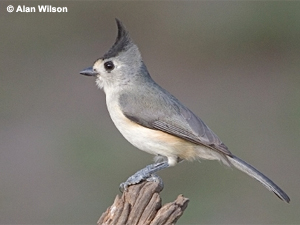
La Pesca is within some nice, varied coastal habitat where we can see some more limited range target species as well as a large number of more widespread, North American wetland birds. Enjoying these habitats in the early morning we expect to encounter species as diverse as Wild Turkey, Black Skimmer, Black-crested Titmouse, Yellow-headed Parrot and Bronze-winged Woodpecker, split by some taxonomies but treated as a race of Golden-olive Woodpecker by others. The wetland areas should provide us with views of a number of more widespread North American wetland birds such as Willet, Laughing Gull, Wilson’s Plover, Wood Stork, Reddish Egret, Brown Pelican and Least Tern to mention just a few.
In nearby vegetation we hope to locate the colourful Blue-capped Motmot, a severley range-restricted bird and equally impressive due to its lovely plumage. In wet areas we should find Mottled Duck, glossy-plumaged Tamaulipas Crow occurs in any habitat here while shrubby woodland holds Long-billed Thrasher. Other species should include Carolina and White-bellied Wrens and Scrub Euphonia.
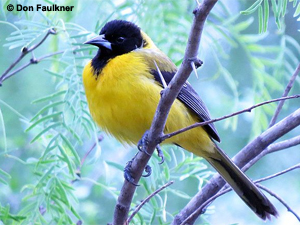
We then head back inland towards Gomez Farias, Tamaulipas where, south of the Tropic of Cancer, birds have a more tropical aspect and we will spend our time exploring the El Cielo Bioshpere Reserve. The impressive Sungrebe can often be found alongside the shady streams as well as Common Black-Hawk perched on streamside trees. The forests here should provide us with Blue-capped Motmot, if we did not see it closer to the coast, along with the very impressive Ivory-billed Woodcreeper, Blue Mockingbird and colourful little Rufous-browed Peppershrike. Of course it would not be the neotropics with an impressive parrot and here we have the splendid Military Macaw to admire. Other birds to look forward to here include the splendid little Bat Falcon, Audubon’s Oriole, Yellow-throated Euphonia and Azure-crowned Hummingbird just to mention a few. Filled with birds that are restricted to Central America as well as amazing in colouration we are sure to enjoy our time at El Cielo.
We will target Tamaulipas Pygmy-Owl on the upper slopes of the reserve and this region is a very ‘birdie’ area giving us a good chance to see some ground-dwelling birds that are hard to see in many places. Thicket Tinamou, Crested Guan, and Singing Quail are all regularly seen here although we need a bit more luck in order to be successful with Great Curassow. The reserve has a few excellent viewpoints for raptors with Ornate Hawk-Eagle, Great Black-Hawk, and Gray Hawk all likely to be seen soaring. We can also visit a freshwater spring later in the day holds which is freqnetly visited by White-crowned Parrot and Red-lored Parrot and if our luck is in we may get lucky with Red-crowned Parrot here too. While the forest holds many key species for us we will ensure not to neglect the nearby irrigated sugar cane fields which have a localized population of Altamira Yellowthroat which nest here in small numbers at this time of the year.
Day 6, El Naranjo, San Luis Potosi – 25th July 2025
We can spend up to a few hours catching up with any birds we might not have seen so far before we head south towards El Naranjo, San Luis Potosi where, following check-in at the hotel, we drive upriver on back-roads to look for Green Parakeet and Red-crowned Parrot.
Days 7-8, Sierra Madre Oriental – Saltillo, Coahuila – 26-27th July 2025

We will leave in the early morning, packed and ready for new accommodation, heading uphill to the mid and upper elevation forests of the Sierra Madre Oriental. Here we expect to see a couple of those visually impressive species that birders head to the tropics to see; Elegant Trogon and the smaller Gartered Trogon. Spending the largest part of the day in the mountain forests we will also be looking for the scarce but smart Grey-collared Becard, often found among roving flocks or feeding in a fruiting tree while the very attractive Spotted Wren can be found in oak woodland or around farms in small parties; it is one of those birds that makes up for lack of colour with intricate patterning in its plumage.
Another very range-restricted species we will look for here is Black-headed Nightingale-Thrush. This ground-feeding bird has a sombre plumage but with its contrasting deep orange bill and feet it is a really striking bird, mostly easily detected by its song. We will also listen out for the amazing song of Brown-backed Solitaire which although not brightly-coloured is often kept as a cage bird due to its singing ability. Other key birds include Brown-capped Vireo, Aplomado Falcon, Curve-winged Sabrewing and if we are lucky, Singing Quail. Within more open woodland areas we should find Rusty Sparrow, one of those birds that is far easier to locate during the breeding season than at other times. We will visit a variety of spots on the mountains, including the highest northern plateau before heading north to Saltillo where we plan to spend two nights.

On the next morning our focus will shift to Worthen’s Sparrow. This is an extremely rare bird with a very limited world range within the high altitude Saltillo grasslands which are largely unprotected a fact which indicates the pressure that this rare bird is under. Although it may not be a visually exciting bird it is subtly smart and its colourful bill is contrasting to the plumage and this is likely to be one of the rarest species we see on this Mexico endemics birding tour.
Of course there are lots of other species in this unique countryside, among prairie dog colonies and wide vistas. Here we also expect to see five other sparrows including Black-chinned, Cassin’s, Black-throated, Rufous-crowned and Botteri’s Sparrows as well as Lucifer’s Sheartail (Hummingbird) , the wonderful, tufted Scaled Quail as well as colourful Scott’s Oriole. Having spent the morning enjoying the birds of this habitat we will move on to the dry creosote scrub where our main targets will be Crissal Thrasher, Colima Warbler and Hooded Yellowthroat.
Days 9-11, Madera, Chihuahua – 28-30th July 2025
An early start will allow us to enjoy good views of Common Poorwill, and possibly to find Great-horned Owl if our luck is in, before making a long journey west to Chihuahua State. If we should have seen all of our target birds quickly over the previous few days we may make the decision to make part of this journey then, shortening the travel time on this day. The drive takes around eight hours along a route that is not one we expect to make many birding stops for, however Burrowing Owl is often visible from the highway as we traverse Torreon, Durango.
Having arrived in ‘the west’ we plan to base ourselves at Madera, Chihuahua, for the next few days. Before checking in, on our first day, we have some locations to check for the range-restricted Mexican Duck, the gorgeous Rufous Hummingbird and a taxanomic curio in the tiny Verdin, smart in the male’s yellow-faced plumage. Other birds as we look for these should include Swainson’s Hawk, Black-chinned Hummingbird, Lark Sparrow, handsome Black Poebe, Bell’s Vireo, Cassin’s Kingbird and Loggerhead Shrike.
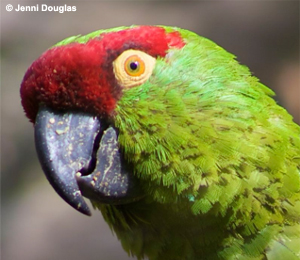
During our time in Madera we will explore the mesas and canyons of the eastern Sierra Madre Occidental. The main focus of our birding will be within the Thick-billed Parrot reserve at the Ejido El Largo, the only accessible location where one can hope to see both this extremely range-restricted parrot and Eared Quetzal. Although the forests in much of this region have suffered from mechanized logging a fair amount of habitat for top quality birding still exists. We aim to arrive by mid-morning for to enjoy the Thick-billed Parrots, either in and around their nest holes which are typically found in large aspens or higher in the ridge tops us as they forage for food. This social parrot gives itself away with its far-reaching, laughing call but as this is the breeding season we expect to be able to observe these rare birds at length close to their nest colonies. We will also spend time searching for the enigmatic Eared Quetzal. As this is one of our major targets we have planned plenty of time in the area to ensure that we get the views of this gorgeous bird that we want.
Other species in the forests of the Sierra Madre Occidental include Mountain Pygmy-owl, stunning Red-faced Warbler, Mexican Chickadee and Rivoli’s Hummingbird which stands out among its family for its large size. Another Central American speciality is White-eared Humminbird which can be quite common in some places while the more widespread Broad-tailed Hummingbird should also be easily encountered. Cute Slate-throated Whitestart with its little red cap will provide some colour along with the striking Painted Whitestart and Olive Warbler. The forests here hold a surprising number of Montezuma’s Quail, plus a good variety of birds that favor open country.
Over the course of the three nights we will spend in this area we plan some nocturnal birding too with our targets being Mexican Whip-poor-will, Flammulated Owl, Whiskered Screech-Owl, and Northern Saw-whet Owl. We have a good chance of seeing all of these but of course night birding is always unpredictable.
Days 12-13, Yecora, Sonora – 31st July-1st August 2025
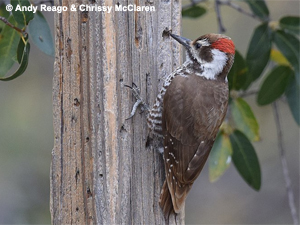
Continuing our journey westwards we leave early, with a five-hour drive towards Yecora, Senora state. We plan on making a lunch stop at Basaseachi, a spectacular, massive canyon that sometimes holds American Dipper. Once we arrive at Yecora we have the remainder of the afternoon and all of the next day in a variety of habitats in this pleasant countryside to add to our bird list. The main target in this area is Aztec Thrush, a tough bird to find throughout its range but here we have a very good chance if we are persistent. Although this striking species of thrush sits motionless for long periods of time mixed pine and oak woodland, with this being the breeding season we hope to find them to be more active that at many other times of the year. In the same woodland habitat we will also be looking out for Arizona Woodpecker, another species with a very limited range in the mountains of western Mexico.
Our time here will be used wisely and according to what we have seen elsewhere to ensure that we can enjoy as many remaining key species as possible. The area hosts the wonderful Yellow Grosbeak, Nutting’s Flycatcher, Violet-crowned Hummingbird with its snowy white underparts, Black-vented Oriole and Orange-fronted Parakeet. Here there are species as diverse as the habitats of the area with birds that will be highly-anticipated as much for their plumage as far their restricted range status. We plan to stay two nights at Yecora.
Days 14-15, Hermosillo, Sonora – 2-3rd August 2025
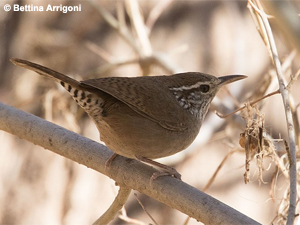
For these final two days of our Mexico birding tour we will concentrate on finding the remaining endemics found at their northern limit in Mexico and relocate ourselves to the town of Hermosillo as our final base. We will visit a variety of woodlands, farmlands and scrublands to see localized species that include the spectacular, long tailed Black-throated Magpie-Jay, White-striped Woodcreeper, smart Sinaloa Wren, Black-capped Gnatcatcher, Five-striped Sparrow and western Mexico’s only predominantly green woodpecker; Grey-capped Woodpecker. These are some of the key species of the area but of course we anticipate many more widespread species and there is the opportunity to look for any of those birds with a wider range that we may have missed along the way.
Hermosillo is the capital of Sonora State and it is located at base of the Sierra Madre Occidental range, overlooking extensive coastal plains which are the favored habitat of several interesting birds. Amazing Gambel’s Quail on the ground as well as two species of woodpecker that favour more open habitats, Gila Woodpecker and Gilded Flicker can be enjoyed here while Five-striped Sparrow and Rufous-winged Sparrow also inhabit the area. With this change of habitat on our final day we can still add new birds at the end of the trip and with a visit to the coast we will still be seeing lots of new species for the trip while targetting Blue-footed Booby, Yellow-footed Gull, Costa’s Hummingbird, Black-tailed Gnatcatcher, and Lucy’s Warbler. For those bird watchers who enjoy night birding we have time during our two-night stay here to search for both Western Screech-Owl and Buff-collared Nightjar.
We end our final day with a celebratory dinner at our hotel, which is chosen to be convenient to the airport at Hermosillo. This will give us time to look back at all the great Mexico rare endemics that we have seen, as well as other birds; this is when we usually take a vote on “bird of the trip” to conclude this Mexico birding tour.
Day 16, Departure – 4th August 2025
Transport will be provided to take you to the airport at a time that is convenient for your flights home.
The following is a list of key bird species that we consider that we have a good chance of seeing based on the experience of previous visits. This is not a complete list of target birds but they are some of the regional highlights that we will put effort into finding and birds that we think are highly memorable and/or regional specialities. Of course, we are unable to guarantee that we can find all of these birds but we do expect to locate a high proportion of them.
- Thicket Tinamou – Crypturellus cinnamomeus
- Crested Guan – Penelope purpurascens
- Great Currasow – Crax rubra
- Gambel’s Quail – Callipepla gambelii
- Singing Quail – Dactylortyx thoracicus
- Montezuma Quail – Cyrtonyx montezumae
- Wild Turkey – Meleagris gallopavo
- Mottled Duck – Anas fulvigula
- Mexican Duck – Anas diazi
- Tawny-collared Nightjar – Antrostomus salvini
- Buff-collared Nightjar – Antrostomus ridgwayi
- Mexican Whip-poor-will – Antrostomus arizonae
- Curve-winged Sabrewing – Campylopterus curvipennis
- Azure-crowmed Hummingbird – Amazilia cyanocephala
- Violet-crowned Hummingbird – Amazilia violiceps
- White-eared Hummingbird – Basilinna leucotis
- Rivoli’s Hummingbird – Eugenes fulgens
- Lucifer Sheartail (Hummingbird) – Calothorax lucifer
- Black-chinned Hummingbird – Archilochus alexandri
- Costa’s Hummingbird – Calypte costae
- Broad-tailed Hummingbird – Selasphorus platycercus
- Rufous Hummingbird – Selasphorus rufus
- Greater Roadrunner – Geococcyx californianus
- Sungrebe – Heliornis fulica
- Yellow-footed Gull – Larus livens
- Blue-footed Booby – Sula nebouxii
- Ornate Hawk-eagle – Spizaetus ornatus
- Grey Hawk – Buteo plagiatus
- Flammulated Owl – Psiloscops flammeolus
- Eastern Screech Owl – Megascops asio
- Western Screech Owl – Megascops kennicottii
- Whiskered Screech Owl – Megascops trichopsis
- Great Horned Owl – Bubo virginianus
- Mountain Pygmy Owl – Glaucidium gnauma
- Tamaulipas Pygmy Owl – Glaucidium sanchezi
- Burrowing Owl – Athene cunicularia
- Northern Saw-whet Owl – Aegolius acadicus
- Eared Quetzal – Euptilotis neoxenus
- Gartered Trogon – Trogon caligatus
- Elegant Trogon – Trogon elegans
- Mountain Trogon – Trogon mexicanus
- Blue-capped Motmot – Momotus coeruliceps
- Gila Woodpecker – Melanerpes uropygialis
- Smoky-brown Woodpecker – Leuconotopicus fumigatus
- Arizona Woodpecker – Leuconotopicus arizonae
- Grey-crowned Woodpecker – Colaptes auricularis
- Bronze-winged Woodpecker – Colaptes aeruginosus
- Gilded Flicker – Colaptes chrysoides
- Collared Forest-Falcon – Micrastur semitorquatus
- Aplomado Falcon – Falco femoralis
- Bat Falcon – Falco rufigularis
- White-crowned Parrot – Pionus senilis
- Red-lored Amazon – Amazona autumnalis
- Red-crowned Amazon – Amazona viridigenalis
- Yellow-headed Amazon – Amazona oratrix
- Thick-billed Parrot – Rhynchopsitta pachyrhyncha
- Maroon-fronted Parrot – Rhynchopsitta terrisi
- Military Macaw – Ara militaris
- Green Parakeet – Psittacara holochlorus
- Orange-fronted Parakeet – Eupsittula canicularis
- Ivory-billed Woodcreeper – Xiphorhynchus flavigaster
- White-striped Woodcreeper – Lepidocolaptes leucogaster
- Black Phoebe – Sayornis nigricans
- Northern Tufted Flycatcher – Mitrephanes phaeocercus
- Pine Flycatcher – Empidonax affinis
- Buff-breasted Flycatcher – Empidonax fulvifrons
- Cassin’s Kingbird – Tyrannus vociferans
- Scissor-tailed Flycatcher – Tyrannus forficatus
- Nutting’s Flycatcher – Myiarchus nuttingi
- Grey-collared Becard – Pachyramphus major
- Rufous-browed Peppershrike – Cyclarhis gujanensis
- Bell’s Vireo – Vireo bellii
- Brown-capped Vireo – Vireo leucophrys
- Black-throated Magpie-jay – Calocitta colliei
- Mexican Jay – Aphelocoma wollweberi
- Tamaulipas Crow – Corvus imparatus
- Chihuahuan Raven – Corvus cryptoleucus
- Grey Silky-flycatcher – Ptiliogonys cinereus
- Bridled Titmouse – Baeolophus wollweberi
- Black-crested Titmouse – Baeolophus atricristatus
- Mexican Chickadee – Poecile sclateri
- Verdin – Auriparus flaviceps
- Spotted Wren – Campylorhynchus gularis
- Carolina Wren – Thryothorus ludovicianus
- Sinaloa Wren – Thryophilus sinaloa
- White-bellied Wren – Uropsila leucogastra
- Long-billed Thrasher – Toxostoma rufum
- Crissal Thrasher – Taxostoma crissale
- Black-capped Gnatcatcher – Polioptila nigriceps
- Black-tailed Gnatcatcher – Polioptila nigriceps
- Blue Mockingbird – Melanotis caerulescens
- Aztec Thrush – Ridgwayia pinicola
- Townsend’s Solitaire – Myadestes townsendi
- Brown-backed Solitaire – Myadestes occidentalis
- Orange-billed Nightingale-Thrush – Catharus aurantiirostris
- Russet Nightingale-Thrush – Catharus occidentalis
- Black-headed Nightingale-Thrush – Catharus mexicanus
- Olive Warbler – Peucedramus taeniatus
- Hooded Grosbeak – Hesperiphona abeillei
- Scrub Euphonia – Euphonia affinis
- Yellow-throated Euphonia – Euphonia hirundinacea
- Worthen’s Sparrow – Spizella wortheni
- Black-chinned Sparrow – Spizella atrogularis
- Lark Sparrow – Chondestes grammacus
- Five-striped Sparrow – Amphispiza quinquestriata
- Black-throated Sparrow – Amphispiza bilineata
- Rufous-winged Sparrow – Peucaea carpalis
- Cassin’s Sparrow – Peucaea cassinii
- Botteri’s Sparrow – Peucaea botterii
- Rufous-crowned Sparrow – Aimophila ruficeps
- Rusty Sparrow – Aimophila rufescens
- Canyon Towhee – Melozone fusca
- Scott’s Oriole – Icterus parisorum
- Audubon’s Oriole – Icterus graduacauda
- Streak-backed Oriole – Icterus pustulatus
- Black-vented Oriole – Icterus wagleri
- Ochre Oriole – Icterus fuertesi
- Crescent-chested Warbler – Oreothlypis superciliosa
- Colima Warbler – Leiothlypis crissalis
- Lucy’s Warbler – Leiothlypis luciae
- Altamira Yellowthroat – Geothlypis flavovelata
- Hooded Yellowthroat – Geothlypis nelsoni
- Audubon’s Warbler – Setophaga auduboni
- Fan-tailed Warbler – Basileuterus lachrymosus
- Red-faced Warbler – Cardellina rubrifrons
- Painted Whitestart – Myioborus pictus
- Slate-throated Whitestart – Myioborus miniatus
- Flame-colored Tanager – Piranga bidentata
- Yellow Grosbeak – Pheucticus chrysopeplus
- Crimson-collared Grosbeak – Rhodothraupis celaeno
- Blue Bunting – Cyanocompsa cyanoides
The map of Mexico below displays the main bases that we use on this birding tour. Most of these are the locations in which we stay, visiting a variety of birding sites close to them, using local knowledge to ensure we have the best chances at the main key species.
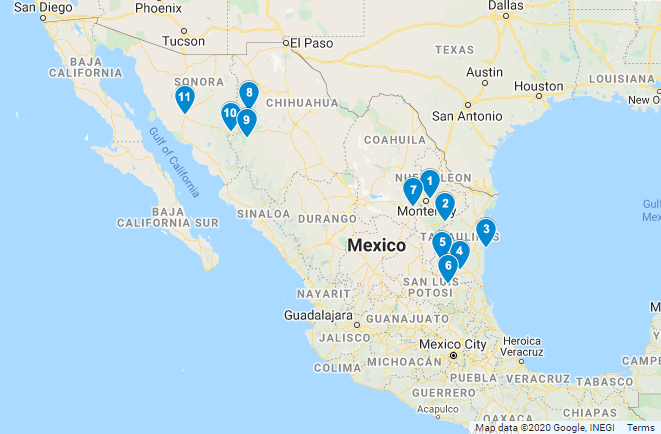
1. Monterrey Airport
5. El Cielo Reserve
9. Basaseachi
2. Linares
6. El Naranjo
10. Yecora
3. La Pesca
7. Saltillo
11. Hermosillo
4. Gomez Farias
8. Madera
The following is a selection of the birds that we have a high chance of seeing on this Mexico rare endemics birding tour.

Black Phoebe 
Sungrebe 
Yellow-footed Gull 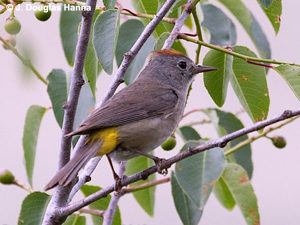
Colima Warbler 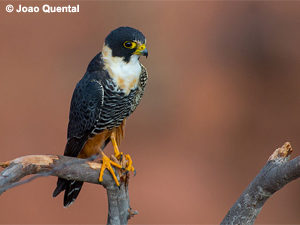
Bat Falcon 
Red-faced Warbler 
Olive Warbler 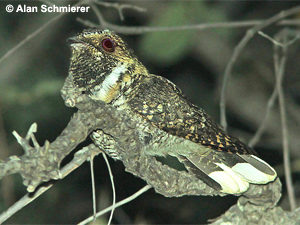
Mexican Whip-poor-will 
Cassin’s Sparrow 
Bridled Titmouse 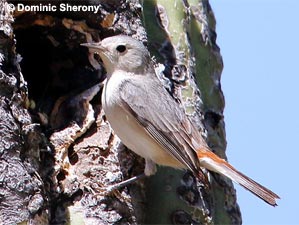
Lucy’s Warbler 
Rusty Sparrow
Tour Details
Tour Cost: £3950 per person
Single Supplement: £500
Included in the tour cost: All transport including airport transfers starting in Monterrey and ending in Hermosillo, road tolls, national park entry fees, accommodation including on the night before commencement of the tour and on the final night, hide fees, all meals, bottled water, boat trip, services of English-speaking birding guide and Calidris Birding Tours guide.
Not included in the tour cost: International flights, travel insurance, entry visa, alcoholic and soft drinks, tips, laundry, excess baggage fees, hotel mini bar, phone calls and any other items of a personal nature.
Accommodation: All accommodation is chosen to be the best balance between proximity to the birding sites and comfort. All accommodations have private bathrooms/shower and air-conditioning while some do have stairs to ascend but no lifts. Everywhere we use is of a good standard for the area, comfortable, clean local accommodation.
Physical effort: This is an easy trip with short walks along generally flat ground, although at times we may need to walk along uneven ground to see certain birds. There are no long hikes involved in this trip and it is suitable for anyone who has a reasonable level of mobility.
Weather: Although this trip will be in the Mexican summer, it can be surprising how cool it can be at night. The temperature in the day time will definitely be warm, but at around 8,000 feet elevation there is definitely a big difference of temperature at night. This time of year is also the rainy season, so we do expect some sharp and hard late afternoon thunderstorms but before and after the rain the weather is normally very pleasant.
Food: Good quality local Mexican food is available at all locations we stay at. Mexican food is based on rice, beans, chicken, fish and shrimp, in some places, with a vairety of sauces available and tacos, enchiladas a constant feature. French fries and vegetables are usually served as side dishes and we are confident that there is something that everyone will enjoy at meal times. Various food requirements should not be difficult to cater for, although variety may be more limited. If you have any specific food requirements/allergies please email us to ensure that we can cater to this.
Tour Leaders

Nick Upton
Nick Upton has been birding since the age of seven and leading birding tours full-time since 2007. After travelling extensively in Asia he settled in Thailand in 1997, teaching English and science while establishing thaibirding.com. With a BSc (Hons) Wildlife & Countryside Conservation he is well placed to understand the ecology and conservation issues that effect birds as well as being adept at finding them.
Nick is co-founder/director of Calidris Birding Tours.

Michael Carmody
Michael Carmody is lifelong birder who has been leading birding tours for almost thirty years, specializing in Mexico. Having seen more than 1000 species in this country alone his expertise is unrivalled. With an extensive knowledge of gloabal birds, built up from leading tours to countries as diverse as Japan, Thailand, Australia, Chile, Peru and Spain he is an asset to this tour in knowledge & personality.
Michael is the owner of Legacy Tours.
While every effort will be made to adhere to the advertised itinerary of this Mexico rare endemics birding tour, we reserve the right to make changes in the case of unforseen circumstances beyond our control. These include problems with accessibility, national park closures, unseasonal weather events or any other reason that may demand an itinerary change.
Recommended Field Guide
Terms and conditions: Please read full Calidris Birding Tours terms and conditions which apply to this Mexico Rare Endemics Birding Tour.
All photos are copyright of the photographers credited and used under the Creative Commons Attribution-Share Alike 2.0 Generic license.


